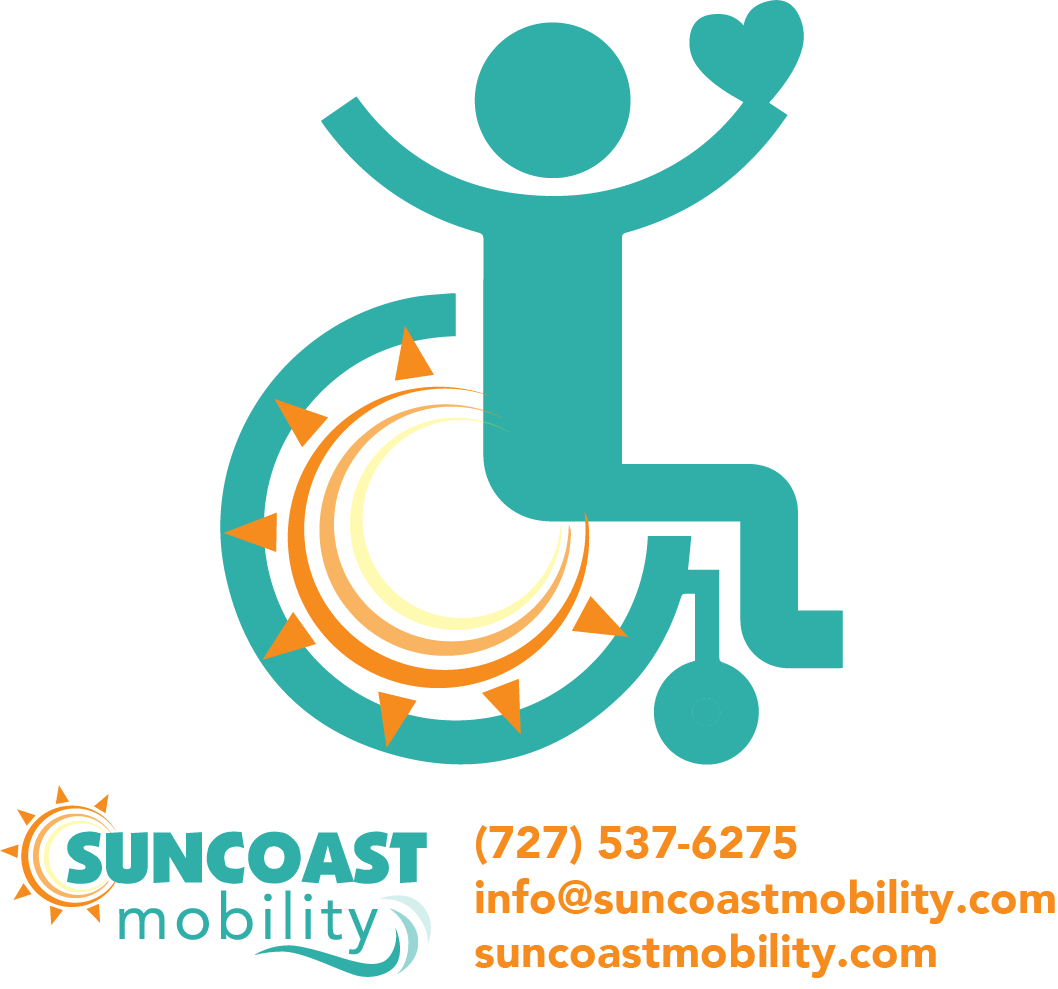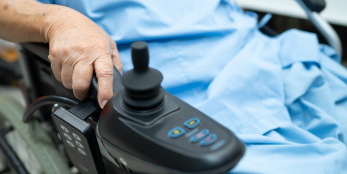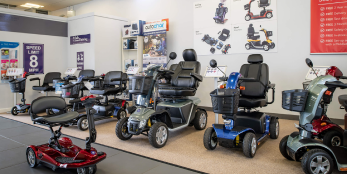Table of contents
Can You Take Mobility Scooters on a Cruise Ship? Everything You Need to Know
Cruise vacations offer a relaxing way to see the world, and the good news is—yes, you can take a mobility scooter on a cruise ship. Whether you're traveling with limited mobility or simply want the convenience of a scooter to navigate the expansive decks, modern cruise lines are more accessible than ever. However, there are important guidelines, requirements, and tips to know before you set sail.
In this article, we’ll cover everything you need to know about bringing a mobility scooter on a cruise ship—from cruise line policies and scooter size requirements to rental options and accessibility tips.

Are Mobility Scooters Allowed on Cruise Ships?
Yes, virtually all major cruise lines allow mobility scooters onboard. Cruise companies like Carnival, Royal Caribbean, Norwegian Cruise Line (NCL), Celebrity Cruises, and Princess Cruises are committed to accommodating passengers with disabilities and mobility challenges.
However, most cruise lines have specific policies in place to ensure safety and accessibility for all passengers. These policies usually include:
Size and weight limits for mobility scooters
Safe storage within your stateroom
Advance notice or documentation requirements
Limited availability of onboard assistance
It's important to review your cruise line’s exact requirements and inform them of your needs at the time of booking or shortly afterward.
Size and Weight Restrictions for Mobility Scooters on Cruises
While most cruise lines are welcoming and equipped to accommodate mobility scooters, it’s important to understand that cruise ships—especially older or smaller vessels—have limited space in their standard cabins, corridors, and elevators. Because of this, many cruise lines enforce specific size and weight restrictions to ensure both accessibility and safety for all passengers on board.
Here are some typical guidelines to keep in mind when bringing a mobility scooter on a cruise:
Maximum Width: Most cruise lines recommend that mobility scooters do not exceed 26 inches in width . This ensures the scooter can fit comfortably through cabin doorways, narrow hallways, and between tables in dining areas.
Turning Radius: A tight turning radius is essential for maneuvering in compact spaces, such as inside staterooms, elevators, and crowded public areas. Scooters with a smaller turning circle offer better navigation and reduce the risk of bumping into fixtures or fellow passengers.
Weight Limit: Although not always strictly enforced, lighter scooters are preferred . Heavier models may be more difficult for staff to assist with, and they could pose safety issues in emergency situations or be harder to stow safely in your cabin.
Battery Type: Cruise ships generally only permit non-spillable, dry-cell batteries , such as sealed lead-acid or lithium-ion . Wet cell batteries are typically prohibited due to leakage risks and safety concerns. Always check with your cruise line for their specific battery policy before sailing.
If your scooter exceeds the recommended dimensions or weight, you may be required to book an accessible stateroom , which offers more space to accommodate larger devices. These rooms are limited in number and often book quickly, so it’s a good idea to plan well in advance and notify the cruise line of your needs as early as possible.
If your mobility scooter exceeds these dimensions, you may be required to book a larger accessible stateroom.

Should You Bring or Rent a Mobility Scooter?
You have two main options when cruising with a scooter:
1. Bring Your Own Scooter
Bringing your personal scooter gives you the benefit of familiarity and reliability. Just make sure it meets your cruise line’s specifications. Also, test the battery and brakes before traveling to avoid any onboard complications.
2. Rent a Scooter for the Cruise
If your current scooter is too large or not ideal for travel, renting is a great alternative. Several third-party companies specialize in mobility scooter rentals for cruises and deliver the device directly to your stateroom or port terminal.
Popular rental providers include:
Scootaround
Special Needs at Sea
Cloud of Goods
These companies offer compact, travel-friendly scooters and often handle coordination directly with your cruise line.
Booking an Accessible Stateroom
If you plan to use a mobility scooter throughout your cruise, it’s highly recommended that you reserve an accessible stateroom. These cabins are specifically designed to accommodate mobility devices and offer:
Wider doorways (32” or more)
Roll-in showers and grab bars
Lower closet rods and accessible desks
More floor space for maneuvering
Accessible staterooms are limited and book up quickly, so reserve as early as possible. Also, be prepared to confirm your need with a mobility or disability statement from your doctor or via a special request form.

Using Your Scooter Onboard and in Port
Onboard Navigation
Cruise ships are massive, and getting around can involve long walks between staterooms, dining rooms, theaters, and pool decks. Fortunately, many modern ships are ADA-compliant and offer:
Elevators on all decks
Ramps at key transitions
Accessible restrooms
Priority seating in theaters and dining areas
Using your scooter onboard is usually straightforward, but you’ll want to be mindful of crowded public spaces, especially during embarkation, disembarkation, and mealtimes.
Shore Excursions and Tender Ports
Many cruise lines offer wheelchair-accessible excursions, though availability can vary by destination. Before booking an excursion, double-check that:
The transportation is accessible (lift-equipped vehicles)
Terrain is suitable for scooters (paved, level, wide pathways)
Staff can assist with boarding if needed
Some ports use tenders (small boats) to bring passengers ashore. In these cases, scooters may not be allowed due to space or safety limitations. If tendering is required, ask your cruise line in advance about accessibility options or alternative arrangements.
Tips for a Smooth Cruise with a Mobility Scooter
To ensure a hassle-free trip, here are some helpful tips:
1. Notify the Cruise Line in Advance
Always inform your cruise line of your mobility needs as early as possible. Most offer a Special Needs Form or Accessibility Department to assist with arrangements.
2. Charge Your Battery Overnight
Most staterooms have power outlets to keep your scooter charged. Bring a power strip or extension cord (if allowed) and charge the battery every night to avoid surprises during the day.
3. Bring Essential Spare Parts
Pack an extra key, charger, and any specialty tools or parts specific to your model. Shipboard shops typically don’t carry mobility scooter accessories.
4. Check Cruise Line Policies Before Booking
Cruise policies can change and may vary between ships, even within the same company. Always confirm scooter dimensions, battery rules, and accessibility services with your specific ship.
FAQ: Taking a Mobility Scooter on a Cruise Ship
Do I need to tell the cruise line I'm bringing a scooter?
Yes, most cruise lines require advance notice and may ask for dimensions or battery details.
Can I rent a scooter if I don’t own one?
Absolutely. Many companies deliver scooters directly to your ship or stateroom.
Are there scooters available onboard?
No, most cruise ships do not supply scooters for general use. You must bring or rent your own.
What if I need help getting on and off the ship?
Cruise staff can assist during embarkation and disembarkation. Notify them in advance to arrange assistance.
Final Thoughts
Cruising with a mobility scooter is not only possible—it’s more accessible and supported than ever before. As the cruise industry continues to grow and evolve, so does its commitment to inclusivity and comfort for travelers of all mobility levels. Whether you're planning a Caribbean getaway, a Mediterranean adventure, or a scenic Alaskan voyage, you can rest assured that most cruise lines are equipped to meet your mobility needs.
That said, the key to a smooth experience lies in preparation. Don’t wait until embarkation day to consider your scooter’s size, battery type, or storage requirements. Take time early in your planning process to research your cruise line’s policies, request an accessible stateroom, and coordinate any assistance you may need both on and off the ship.
Another important consideration is how you'll use your scooter during the cruise. Many ships are enormous—essentially floating cities—and having a scooter can greatly enhance your independence and enjoyment. From rolling along the promenade deck to quickly getting between restaurants, theaters, and lounges, your mobility scooter allows you to enjoy the full range of onboard amenities without physical strain.
When it comes to port days and shore excursions, having a scooter opens the door to exploring local attractions, shopping districts, and cultural landmarks with greater ease. However, not every port is fully accessible, and some may require transfers via tender boats that restrict scooter use. Researching each destination ahead of time and speaking to the cruise’s shore excursion team will help you make the best choices for your itinerary.
For those unsure about traveling with their own device, renting a scooter can be a stress-free and convenient solution. Rental companies that specialize in cruise travel understand ship requirements and deliver mobility devices directly to your cabin or port terminal. This means less hassle for you and peace of mind knowing the equipment will be ready and compliant with ship guidelines.
Ultimately, taking a mobility scooter on a cruise ship allows you to experience the freedom and enjoyment of cruising without limitations. With proper planning and a little coordination, you can focus on what matters most—relaxing, discovering new places, and creating lasting memories at sea.
So go ahead—book that dream cruise, pack your essentials, and set sail with confidence, knowing that your mobility needs are not only welcomed but supported every step of the way.








